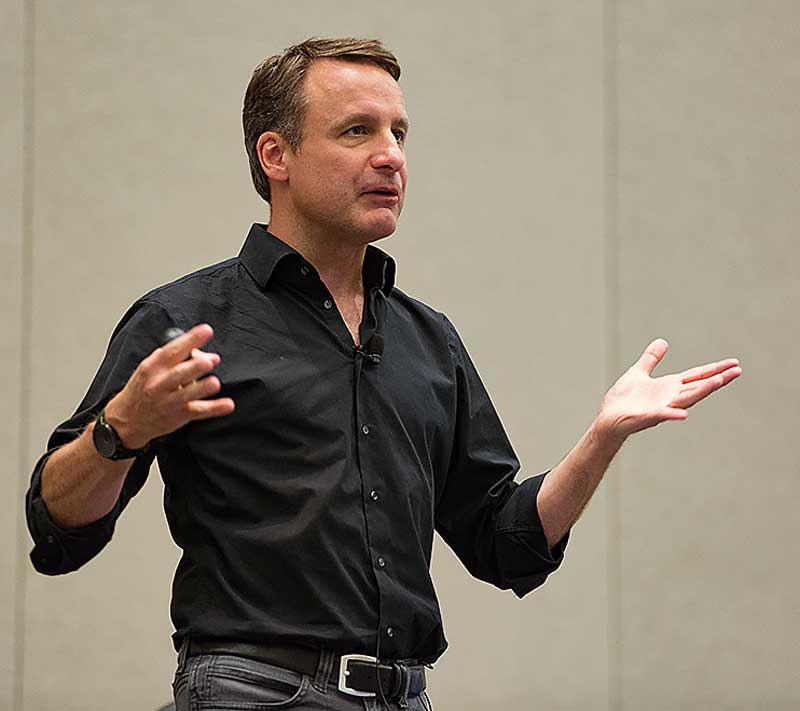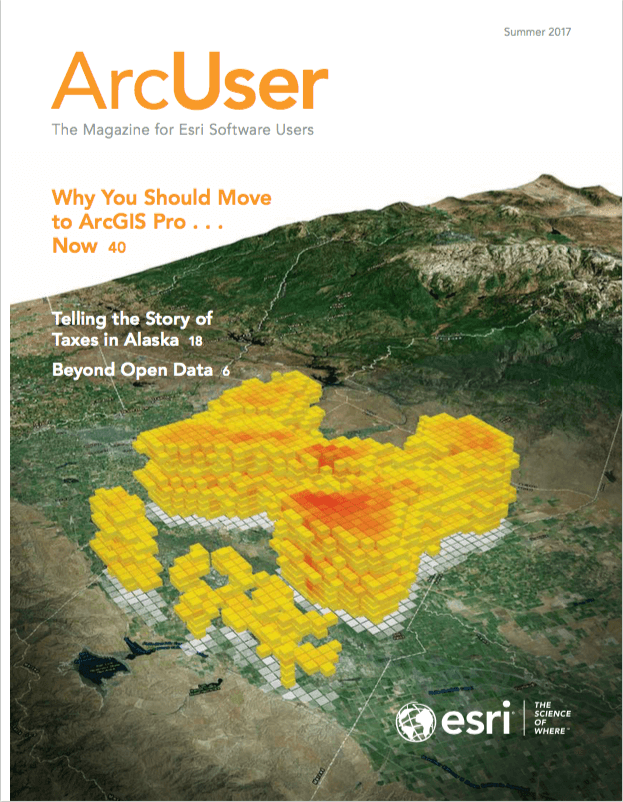“We are at an inflection point in the history of our species,” said Dr. Jonathan Foley, the keynote speaker at the 2017 Esri Science Symposium. He noted that the magnitude of change has been greater in the last 50 years than in all previous history, making the need for scientists to shape humanity’s response to this situation of vital importance.

Foley was speaking to more than 400 attendees at the second annual event held in conjunction with the Esri User Conference in San Diego, California. It is designed to bring together scientists from domains beyond geography and GIScience in this special venue to encourage networking and cross-disciplinary work.
The keynote speaker is the executive director of the California Academy of Sciences, where he is also the William R. and Gretchen B. Kimball Chair. An effective and prolific science communicator, he has presented on global environmental issues and written articles, op-ed pieces, and essays for mainstream media such as National Geographic, Scientific American, and The Guardian.
In her introduction of Foley, Esri chief scientist Dawn Wright underlined the dual nature of Esri’s science mission: to support the science community with tools and technology to carry out its work and to establish Esri as a member of the scientific community through its scientific contributions.
The perception that the Earth is big and we are small has had a profound effect on our strategies for dealing with the Earth. The shortcomings of seeing the Earth as limitless were not as apparent for most of human history when the world’s population was counted in hundreds of thousands instead of the billions of today.
“By ‘mining the planet,’ we are leaving a depleted and degraded legacy to future generations,” cautioned Foley. “We are pushing the planet to its breaking point.” However, Foley sees framing this situation as an environmental problem as missing the point, and he loathes the term “sustainability” for just that reason.
This is not an environmental problem—it’s a civilization problem. “It is not just about polar bears but the world’s people,” Foley said. “It’s not okay to knowingly leave behind a degraded world. The imperative has always been to leave the world a better place than you found it.”
What can scientists do? Foley sees the development of big data, microsatellites, and citizen science as tools for making these changes. He cited the example of iNaturalist, a smartphone app for crowdsourcing biodiversity data sponsored by the California Academy of Sciences, that has collected millions of geocoded observations.
While gathering big data in areas such as biodiversity is undoubtedly valuable, what the world needs is not so much big data but big wisdom. Foley said we need to translate big data into “a sticky idea that changes the way we think.”
But it won’t be enough to just change the way we think, we need to change the way we act. What is stopping actions that will get us to a more viable future? It is a culture that disparages science. This factor must be addressed because it triggers a filter that causes half the people to tune out this important discussion.
Consequently, the role of scientists as communicators is more crucial than ever before. The lack of civil discourse around the value and role of science has led, in turn, to a loss of hope. Without hope, people will not act, and action is necessary.
To overcome this situation, scientists need to
- Choose to hope.
- Have a plan.
- Tell stories that inspire action.
“Hope is the hardest but most necessary aspect because if we don’t have hope, nothing else really matters,” said Foley. Scientists need to help imagine a world in which people and nature are thriving together. Getting to that vision requires a plan. “As scientists, we need to work on solutions, not just pointing out problems.” After embracing hope and coming up with solutions, scientists need to tell stories that communicate that vision and inspire action.
Following the keynote, Dr. Michael Goodchild, University of California, Santa Barbara, professor emeritus, led a panel discussion of topics raised by Foley. Panel participants were Shaowen Wang of the University of Illinois, Urbana-Champaign; Sheila Steinberg of Brandman University; Andre Skupin of San Diego State University; and Christina Boggs-Chavira of the California Department of Water Resources along with Foley. They spoke of the challenges of communicating science in a way that navigates cultural filters and is understandable and well received by a society in which science is increasingly a dirty word. A networking social followed the panel discussion.
Keep up with Esri’s science work and follow the science group on GeoNet.

